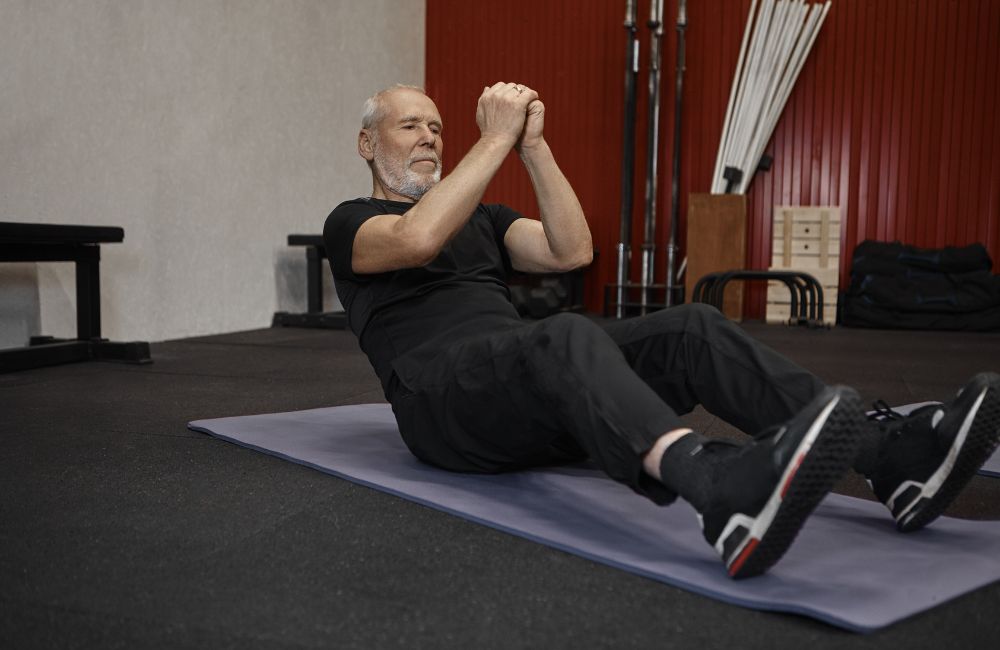
“Core strength plays a crucial role in every stage of life, particularly as we age. A strong core enhances balance, aids in performing daily tasks more effectively, and reduces the risk of experiencing low back pain.
To support seniors in maintaining optimal health and well-being, I’ve curated a list of the top 10 core exercises.
Incorporating these exercises into a regular workout routine can significantly contribute to overall strength and vitality in later years.
The Core Defined

Unfortunately, there is no hard and fast definition for “the core” proper. That being said there are a few key muscles that most professionals include as part of the core. Let’s first review these muscles and their functions.
Rectus Abdominis
When people think of the ab muscles, they often picture the rectus abdominis. This muscle is also known as the elusive “six-pack”.
The rectus abdominis is positioned in the middle of the trunk and runs from the upper third of the trunk all the way down to the pelvis. Because of its position, the muscle serves to bend the trunk, control trunk motions, and generally provide stability to the spine.
External/Internal Obliques
On the sides of the trunk, lining the rectus abdominis, we can find the internal and external obliques. These muscles are similar in both position and function. Therefore, we often group them together as simply “the obliques”.
The obliques primarily serve to rotate and side bend the trunk. These are crucial muscles for athletes, especially golfers and others whose sports require significant amounts of rotational movements.
Transversus Abdominis
Beneath the rectus abdominis lies the transversus abdominis (TA). This muscle has received lots of attention in the last few years, as researchers have discovered how a strong TA can provide more spinal stability and generally leads to less pain.
The TA’s function is to compress the abdominal contents and stabilize the spine during movement. Essentially, the TA can be thought of as a natural girdle.
Multifidi
The multifidi are very small muscles found throughout the spine. They serve to control rotation on a local level, keeping spinal segments in the proper position.
By training the multifidi, seniors (and everyone else) puts themselves in a better position to avoid injury and perform better in their daily tasks.
Top 10 Core Exercises for Seniors
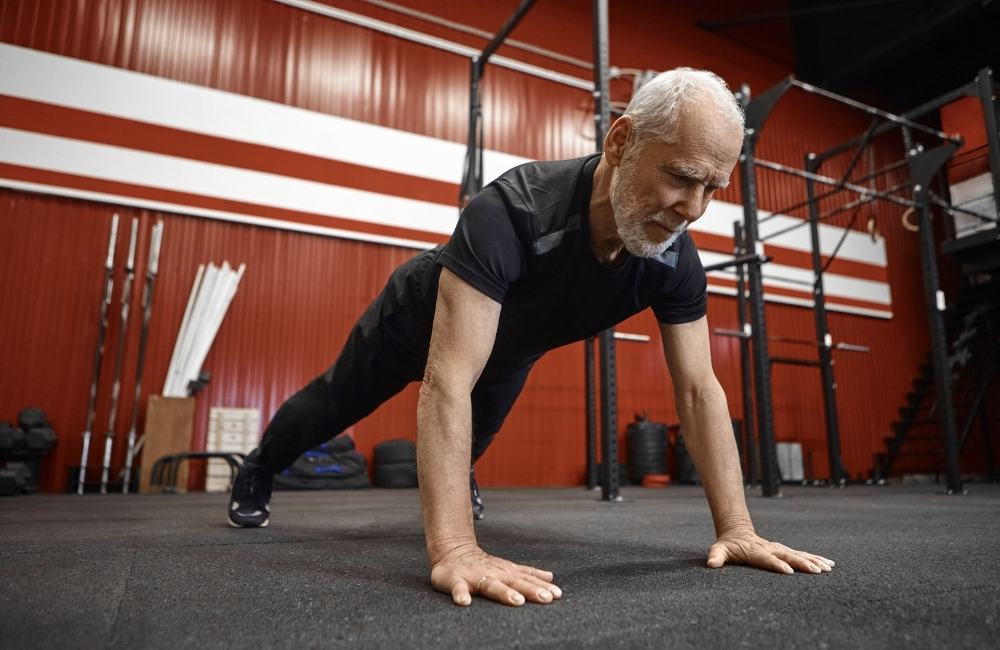
Now, without further delay, I will outline the 10 best core exercises for seniors!
You may also like:
The Only 7 Exercises You’ll Ever Need to Tone Your Abs and Build Core Strength
10 Exercises To Strengthen Your Core and End Lower Back Pain
1. Bridges
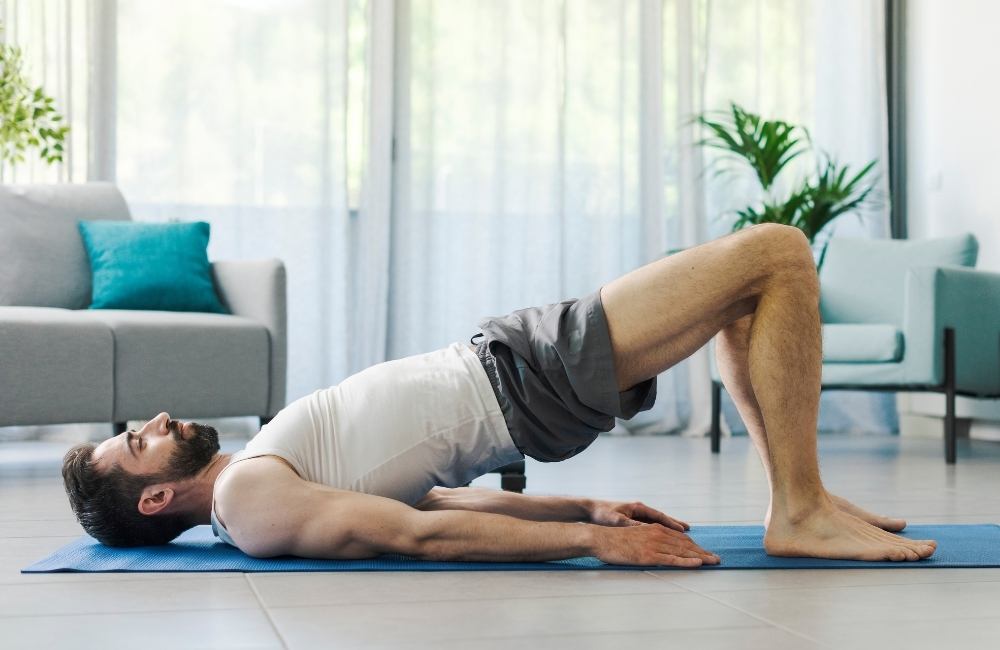
Bridges are a phenomenal strengthening and mobility exercise. For seniors specifically, bridges are especially important, as they force the body into extension and they encourage activation of the glutes.
Bridges are also great because they can be performed anywhere, as long as there is sufficient floor space available.
How to Perform:
- Lie flat on your back, with your knees bent and your feet in contact with the floor.
- Push down through your heels, while squeezing your glute muscles, lifting your back and hips off of the ground.
- Hold this position for 10 seconds then slowly lower back down to the starting position.
- Repeat this pattern for 10-12 repetitions, for 3-4 sets, 2-3 times per week.
2. Planks
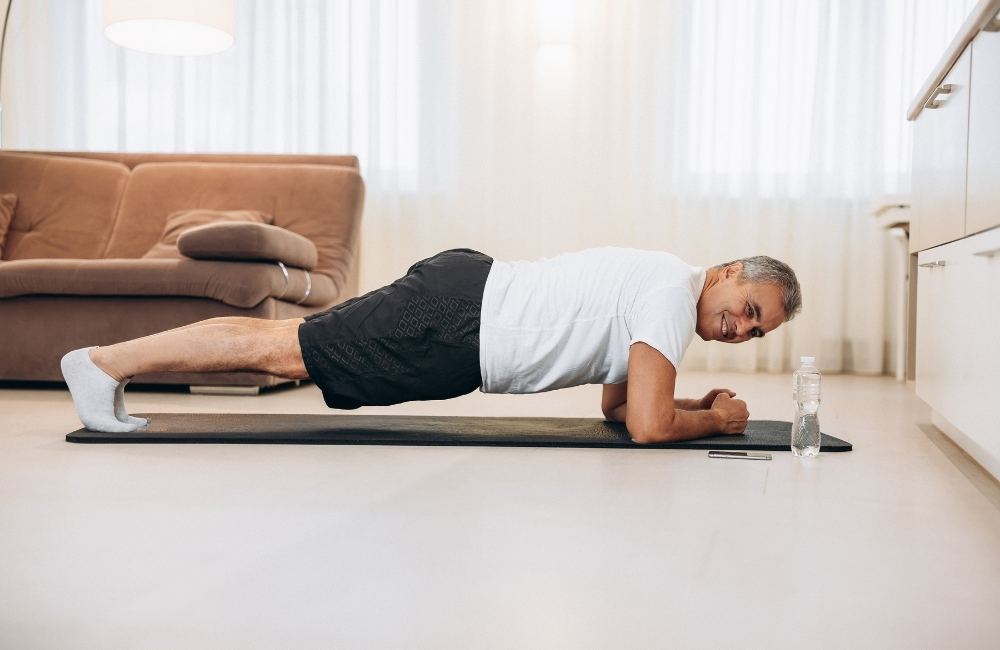
Isometric exercises, such as planks, serve to improve muscle endurance and strength. For seniors, it may be appropriate to start performing bridges on the knees.
After some time, progressing to bridges on the toes will help to increase strength and stability even more.
How to Perform:
- Place both forearms on the floor, along with both toes, with your feet spaced about hip-width apart.
- Your back should be perfectly straight, with no sagging or arching.
- Hold this plank position for 15 seconds, for 5 repetitions, 2-3 times per week.
3. Seated Marches
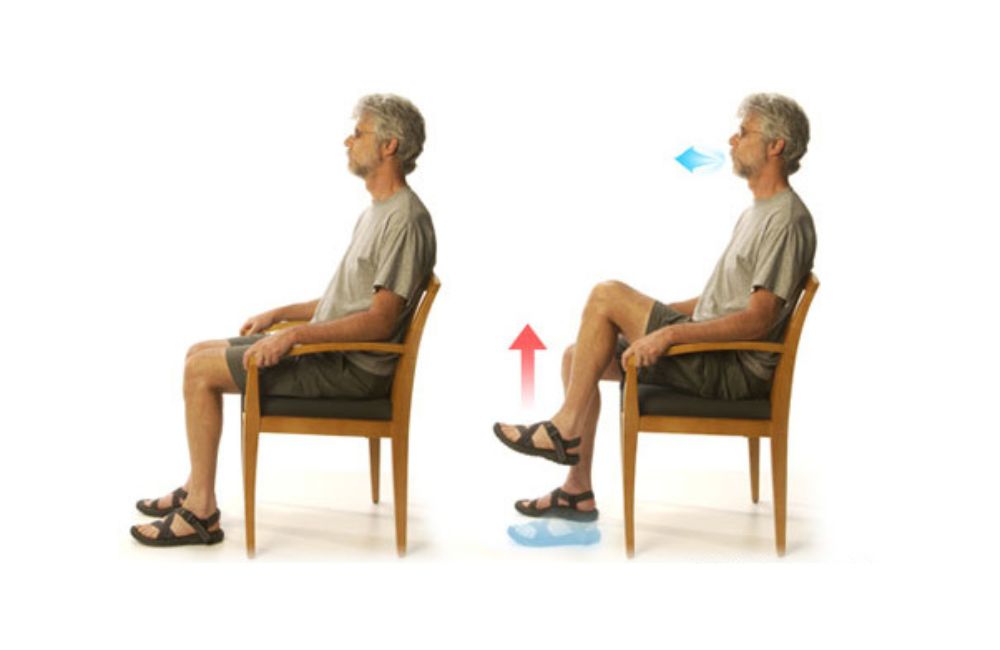
For this exercise, you’ll want to use a firm chair that isn’t too high off of or too close to the ground.
This will help you perform the exercise with better form so that you don’t experience any instability or pain.
How to Perform:
- Start by sitting up tall in your chair, near the edge.
- If you need extra support, you may place both hands on the sides of the chair for the duration of the exercise.
- Slowly, lift one knee in the air, elevating your foot a few inches off of the ground.
- Hold this position for 5 seconds, then slowly return your foot to the floor.
- Repeat on the other side.
- Complete 10-12 repetitions per side, 3-4 sets per session, 2-3 sessions per week.
4. Dead Bugs
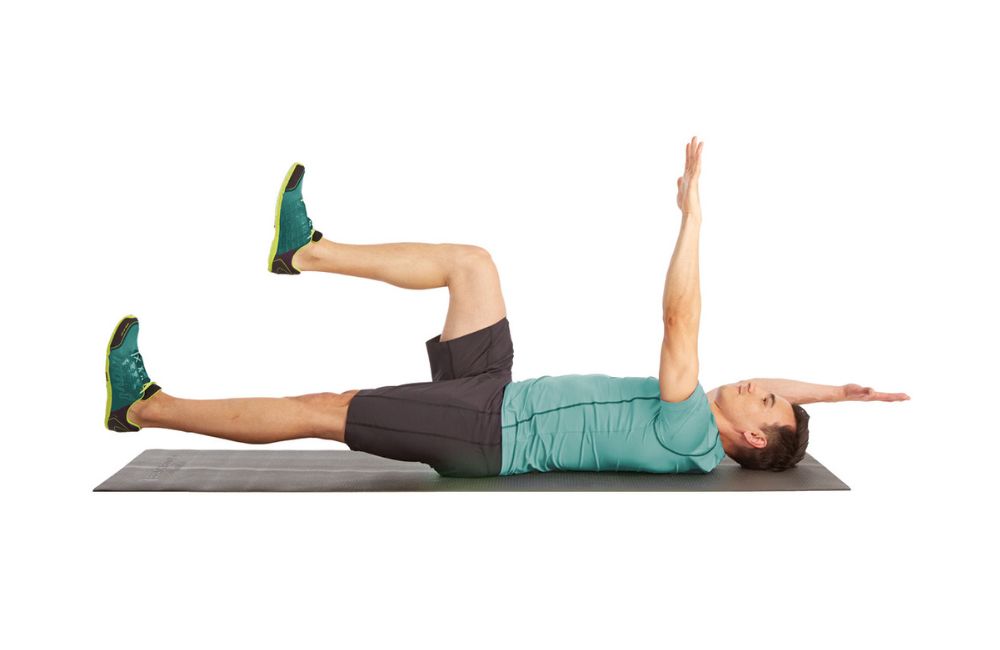
As silly as the name may sound, dead bugs are a terrific exercise for improving core strength and stability.
This movement is versatile and can be modified in many different ways for various levels of ability.
How to Perform:
- Lie on your back with your right leg straight, a few inches off of the ground, your left knee bent close to your chest, your left arm extended behind your head, and your right arm reaching toward the ceiling.
- Hold this position for 5 seconds, then switch sides.
- Complete 10-15 reps, for 3-4 sets, 2-3 times per week.
5. TA Holds
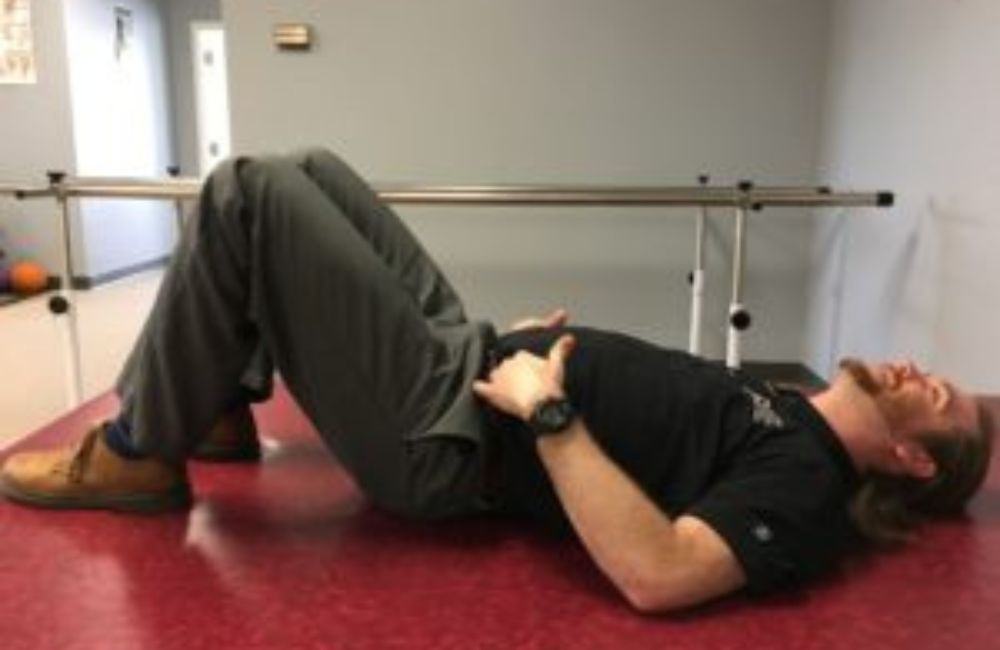
This exercise is surprisingly difficult to perform correctly. Activating the TA takes significant practice, but learning this skill pays off big time in the long run.
How to Perform:
- Lie flat on your back with your knees bent and your feet flat on the floor.
- Slowly lift your feet off of the ground, keeping your knees bent.
- Attempt to flatten your low back against the floor.
- Hold this contraction for 10 seconds, then slowly return your feet to the ground to complete the rep.
- Perform 10-12 reps per set, 2-4 sets per session, 2-3 times per week.
6. Sidelying Clamshells
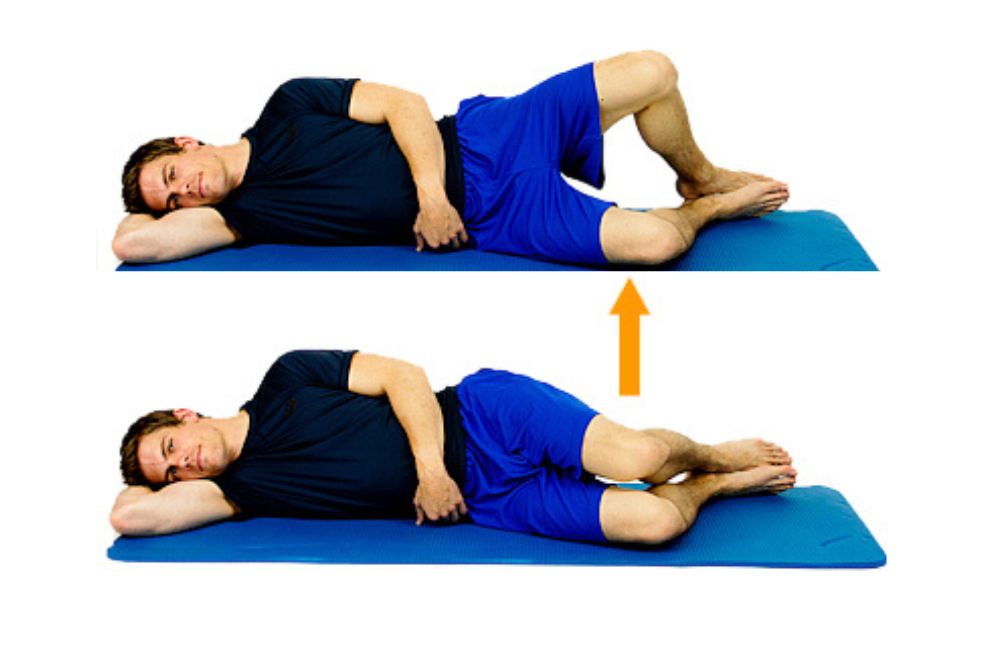
Clamshells are a classic physical therapy exercise. This movement activates the external rotators of the hip, which are generally weak in most people.
By strengthening these muscles, you will increase stability, and strength, and decrease the chances of developing a painful condition.
How to Perform:
- Start by lying on your left side, with your knees bent and your right leg stacked on top of your left.
- While keeping your feet in contact with one another, slowly rotate your right leg upward, as far as you can without leaning backward.
- Once you’ve reached the top of your range, slowly return to the starting position to complete the rep.
- Perform 10-15 reps per set, 2-3 sets per session, 2-3 times per week.
7. Bird Dogs
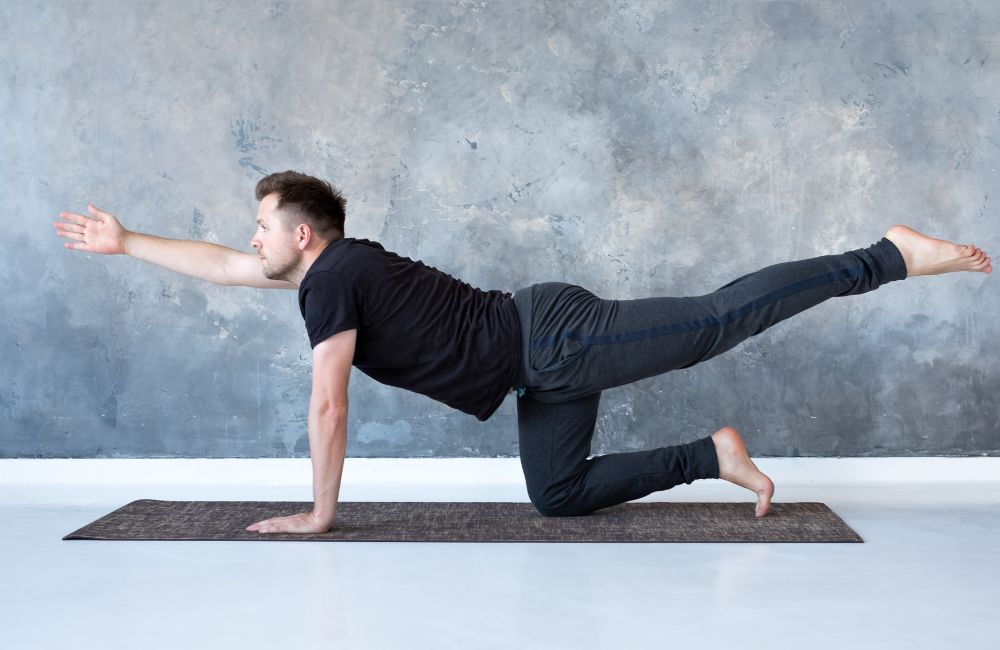
Bird dogs tend to come up a lot on lists of best core exercises. This is because bird dogs are one of the most effective exercises for strengthening the multifidi.
The multifidi are critical muscles that lead to better stability and decreased risk of spinal injury.
How to Perform:
- Start on your hands and knees, with your hands directly under your elbows (which are directly under your shoulders), and your knees directly beneath your hips.
- Slowly, kick your right leg backward, in line with your trunk, as you simultaneously extend your left arm out in front of you.
- Hold for 10 seconds, then return to the starting position to complete the repetition.
- Perform 10-15 rep per set, 2-4 sets per session, 2-3 times per week.
8. Heel Slides
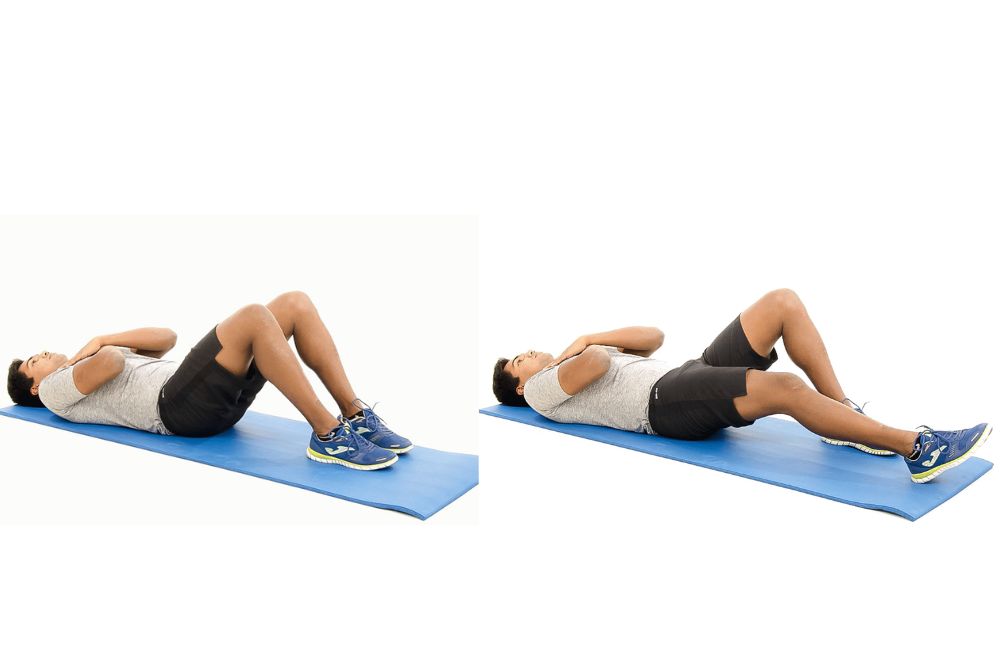
Of all the exercises on this list, this is probably the easiest in terms of intensity. However, this doesn’t mean that the exercise lacks value.
Rather, heel slides can help significantly with lower body mobility and trunk stability.
How to Perform:
- Lie on your back in hooklying (feet flat on the floor, knees bent).
- Tighten your abdominal muscles by attempting to draw your belly button down towards the floor.
- Bend one knee, sliding your heel toward your buttocks.
- Once you’ve bent the knee as far as you can, return to the starting position and perform on the other side.
- Complete 10-12 reps per set, 2-3 sets per session, and 2-3 sessions per week.
9. Seated Heel Touches
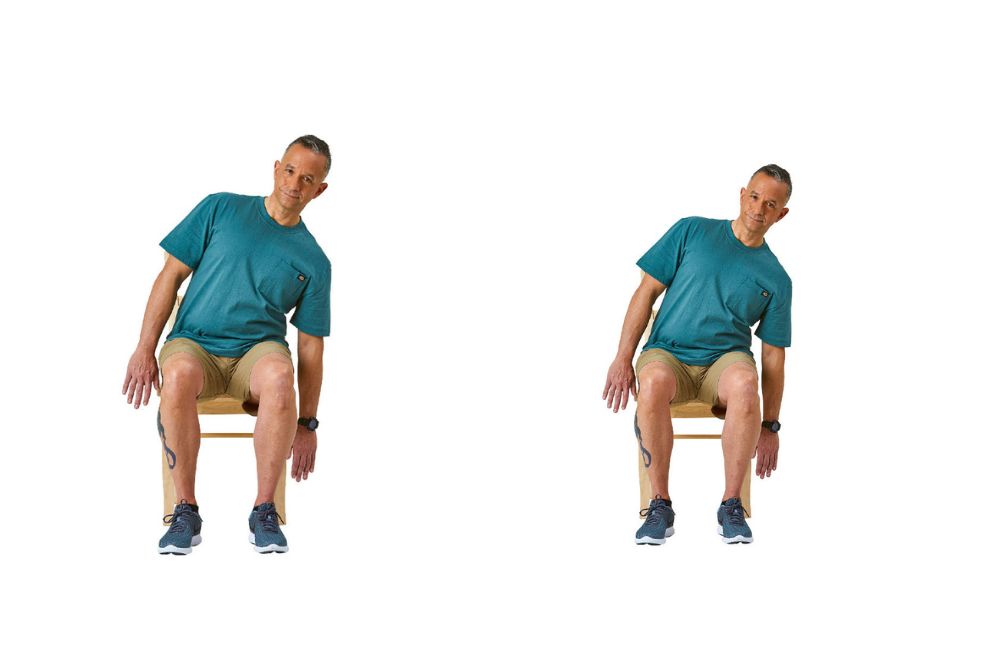
Heel touches are often performed in a supine position. However, this can cause some discomfort in seniors.
Therefore, modifying the movement to be performed in a chair can address this issue. This movement will primarily emphasize the oblique muscles.
How to Perform:
- Sitting up tall, at the edge of the chair, allow your arms to hang down to your sides.
- Keeping the back flat, slightly tilt towards the left side, reaching toward your left heel.
- Return to the starting position and perform on the right side.
- Complete 10-12 reps per set, 2-3 sets per session, and 2-3 sessions per week.
10. Lean Backs
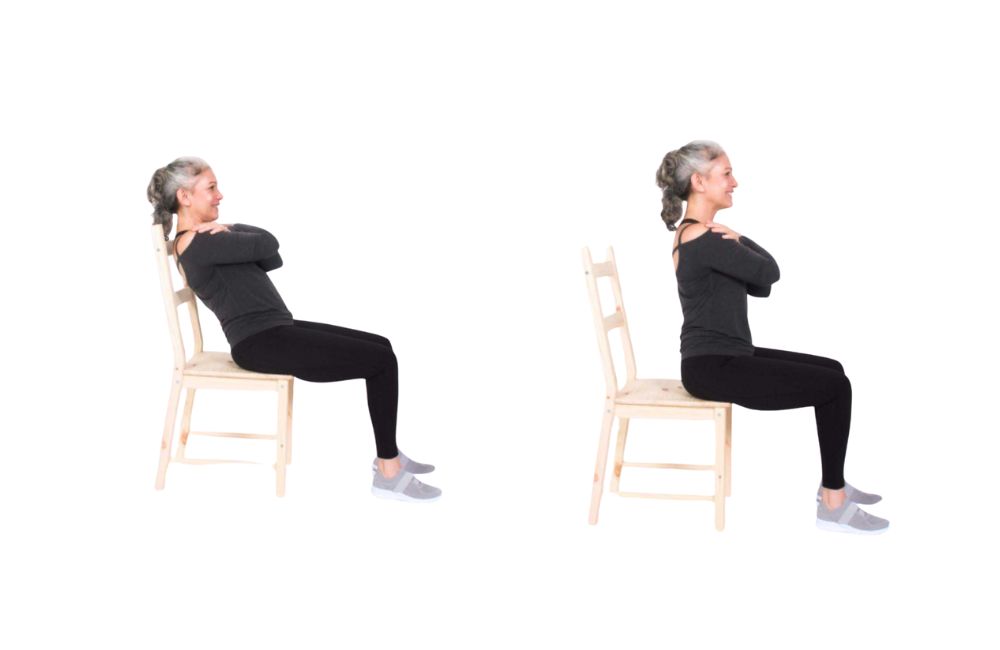
This is a great starter exercise for seniors who are working up to performing crunches or situps. The rectus abdominis works hard during this movement, keeping the trunk stable.
How to Perform:
- Start by sitting on the floor, with your knees slightly bent and your back straight.
- Cross your arms over your chest and lean back as far as you can without falling backward.
- Return to the starting position by contracting your rectus abdominis and sitting up.
- Complete 10-12 repetitions per set, 2-4 sets per session, and 2-3 sessions per week.
The Bottom Line
These core exercises for seniors require no equipment and take very little time to complete. If you’re looking for a way to improve your core strength, increase your independence, and decrease your chances of developing back pain, try this routine out!


